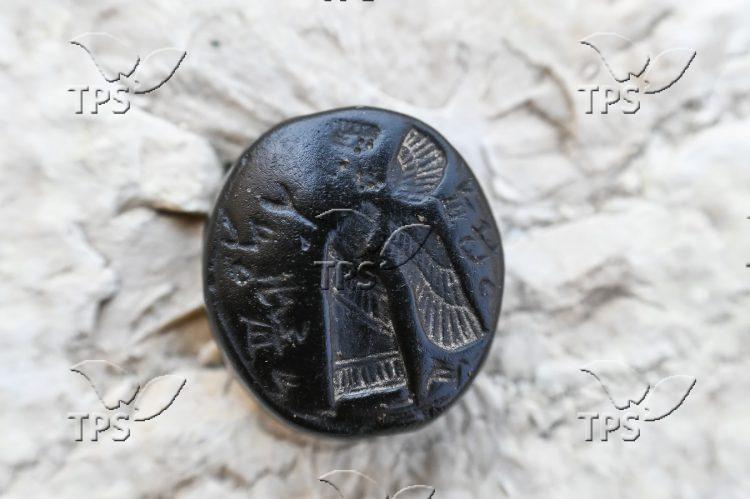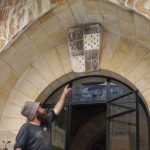‘Spectacular’: Rare 2,700 Year-Old Stone Seal Unearthed Near Jerusalem’s Temple Mount
Jerusalem, 29 August, 2024 (TPS-IL) -- A rare and unusual stone seal, dating back approximately 2,700 years to the First Temple period, was found near the Temple Mount in Jerusalem, the Israel Antiquities Authority announced on Thursday.
Calling the find “spectacular,” Israeli Minister of Heritage, Rabbi Amichai Eliyahu said the seal “demonstrates the importance and centrality of Jerusalem already 2,700 years ago. It is impossible not to be moved by such an unmediated and direct encounter with a chapter of our past, a time in which the First Temple stood in all its glory.”
The central image on the seal is a figure depicted in profile, possibly a king, with wings and wearing a long, striped garment. The figure, adorned with a mane of long curls and a crown or hat, strides confidently to the right, with one arm raised as if holding an unseen object. The name “LeYehoʼezer ben Hoshʼayahu” is inscribed in paleo-Hebrew script on both sides of the figure.
The seal, engraved with mirror writing on black stone, was used by its owner both as a personal amulet and as a tool to sign documents, a practice common among senior officials during the Kingdom of Judah. The object is designed with a convex cut on both sides and a hole drilled through its length, allowing it to be strung onto a chain and worn around the neck.
Dr. Filip Vukosavović, an archaeologist and Assyriologist with the Antiquities Authority said this was the first discovery of a winged “genie” — a protective magical figure — in Israeli and regional archaeology. Such figures are known from the Neo-Assyrian art of the 9th to 7th centuries BCE, where they were considered protective demons.
“This is an extremely rare and unusual discovery,” Vukosavović said.
Dr. Yuval Baruch, one of the excavation directors, added, “The figure of a winged man in a distinct Neo-Assyrian style is unique and very rare in the glyphic styles of the late First Temple period. The influence of the Assyrian Empire, which had conquered the entire region, is clearly evident here.”
The researchers believe that the seal originally featured only the demon image and was worn as an amulet by a man named Hoshʼayahu, a senior figure in Judah’s administration. After Hoshʼayahu’s death, his son Yehoʼezer likely inherited the seal and added both his and his father’s names to the amulet, thus claiming the protective and authoritative qualities that the talisman represented.
The name Yehoʼezer is familiar from the Bible, specifically from the Book of Chronicles, where a fighter of King David named Yoʼezer is mentioned. Additionally, the Book of Jeremiah references a figure named ʼAzariah ben Hoshʼaya, a name that closely parallels the one inscribed on the seal.
The stone was found in an archaeological garden below the Temple Mount’s southern wall where the City of David was located.
The City of David is the original core of the ancient biblical city. Located just outside the southern walls of Jerusalem’s Old City, it is considered one of Israel’s most important archaeological sites. It is where King David established his capital and the site of many pivotal Biblical events. The park is best known for Hezekiah’s Tunnel, which was constructed by King Hezekiah to provide water to the city ahead of an Assyrian siege led by Sennacherib.







